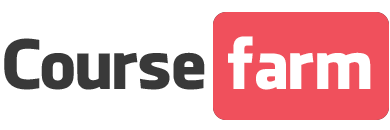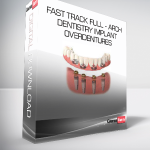Fast Track Full – Arch Dentistry Implant Overdentures
$99.00
UNLV School of Dental Medicine is an ADA CERP approved provider. ADA CERP is a service of the American Dental Association to assist dental professionals in identifying quality providers of continuing dental education. ADA CERP does not approve or endorse individual courses or instructors, nor does it imply acceptance of credit hours by boards of dentistry.
- Description
- Reviews (0)
Description
Fast Track Full – Arch Dentistry Implant Overdentures
Are you confused by Digital Dentures? Are you a laboratory technician or dental clinician interested in getting into digital technology for full-arch removable restorations? Have you talked to sales reps for 3D printing companies and frustrated by how much it costs to get into printing in your own practice/lab?
This exciting course covers amazing technology and systems you, your assistants, and your laboratory needs to know about 3D printing and will answer your digital questions and address your digital concerns! We cover the basics all the way up to the advanced level methods of using intraoral and optical scanning techniques, clinical and laboratory workflows, 3D printing techniques, and multiple methods for making digital dentures. Also included is up to 23 hours of continuing education credits provided by UNLV School of Dental Medicine.
This course utilizes learning skills and educational content that is 10% projection slides and 90% video-based education. We emphasize simulated “LIVE” video-based techniques to demonstrate the use of scanners, printers, software, and clinical demonstration. You will be provided with files STL files of demonstrated cases for you to follow along.
To receive the best education possible, this course is broken down into 5 sections:
Section I: Fundamentals of 3D Dentistry & Optical Scanning
Covering the basics of digital dentistry, how to incorporate affordable intraoral scanning techniques and a review of multiple scanners available on the market.
Topics include:
Historical Overview of 3D Dentistry
A Review of Scanners on the Market
Cost Analysis
Accuracy of Scanners
Scanning Workflows
Strategies for Implementing Intraoral Scanning into Clinical Practice
Clinical Examples Using Scanners
Section II: Getting ed with Digital Dentures
This section focuses on the fundamentals and background of digital denture technology and techniques, multiple methods of construction of digital dentures, software options, and the essentials of working with digital files for dentures from the clinical and laboratory perspective.
Topics include:
Differences Between Digital and Conventional Dentures
Software Choices for Digital Dentures Pros and Cons: Exocad, 3Shape, Blue Sky Bio, Dental Wings
Working with Pink GUM tissues and Stains & Glazes
Downloading and installing FREE Software for Use with Digital Dentures
Working with Laboratory Software to Receive Files from Doctors
Section III: 3D Printing and Digital Dentures
A comprehensive introduction and in-depth discussion on how 3D printing works and how it can be utilized for clinical and laboratory techniques.
Topics include:
Introduction and Background to 3D Printing
Tips & Tricks Working with 3D Printing Resins
Introduction to the Moonray 3D Printer
Reviewing Post-Processing Techniques
Introduction to the NextDent / 3D Systems 5100 3D Printer
Working with the 5100 3D Printer!
Section IV: Immediate Denture Workflows
This section is a great way to get started with digital dentures! We cover the basics of working with optical scanners to scan for immediate dentures, scanning strategies, and working with STL files. We then take a case and work it up in several different methods including: monolithic dentures with pink tissues, two-piece arch-form dentures, staining and glazing techniques, and how to finish cases for amazing results!
Topics include:
Clinical Techniques for Immediate Digital Dentures
Working with Optical Scans
Using Blue Sky Plan Software to Design Dentures
Working with Exocad to Design Monolithic Dentures
3Shape Applications for Making Arch-Form Dentures
Creating Post-Palatal Seals
Printing, Removing Supports, Cleaning Dentures
UV Curing Techniques
Gluing and Finishing Digital Immediate Dentures
Section V: Predictable 3D Printed Digital Dentures
Digital Dentures is a whole lot of fun!! This exciting section covers what you need to know to incorporate traditional and digital methods into a digital denture workflow. Using stone casts or intraoral scanning technology allows clinicians and laboratories to be able to easily bring together optical scans to create predictable digital dentures!
Topics include:
Traditional vs. Digital Denture Workflows
Laboratory scanning techniques
Working with MeshLab and Exocad software to align multiple files
Predictable and simple two-piece digital dentures: print teeth in arches in tooth colored resins and bases with pink resins!
UV Curing, cleaning up dentures, and staining & glazing
Gluing and Finishing step-by-step techniques
Continuing Education Credits provided by:
This activity has been planned and implemented in accordance with the standards of the Academy of General Dentistry Program Approval for Continuing Education (PACE) through the joint program provider approval of UNLV School of Dental Medicine and Dr. Scherer. UNLV School of Dental Medicine is approved for awarding FAGD/MAGD credit. AGD Pace Provider 213111. Nationally Approved From 6/1/2017 – 5/31/2021.
UNLV School of Dental Medicine is an ADA CERP approved provider. ADA CERP is a service of the American Dental Association to assist dental professionals in identifying quality providers of continuing dental education. ADA CERP does not approve or endorse individual courses or instructors, nor does it imply acceptance of credit hours by boards of dentistry.
Your Instructor
Michael D Scherer, DMD, MS
Michael D Scherer, DMD, MS
Dr. Michael Scherer is an Assistant Clinical Professor at Loma Linda University, a Clinical Instructor at University of Nevada – Las Vegas, and maintains a practice limited to prosthodontics and implant dentistry in Sonora, California. He is a fellow of the American College of Prosthodontists, has published articles, books, and in-person and online courses related to implant dentistry, clinical prosthodontics, and digital technology with a special emphasis on full-arch reconstruction. As an avid technology & computer hobbyist, Dr. Scherer’s involvement in digital implant dentistry has led him to develop and pioneer new approaches with 3D printing, CAD/CAM surgical systems, implement interactive CBCT implant planning, and outside of the box radiographic imaging and digital design concepts.
Course Curriculum
Introduction to Course
Introduction to Course & Background (5:43)
Section I – Fundamentals of 3D Dentistry & Optical Scanning
Chapter 1: Why Digital? (20:45)
Chapter 2: Traditional vs. Digital Workflows (14:46)
Chapter 3: Intraoral Scanning: Scanner Systems, Techniques, Accuracy of Scanners, Scanning Workflows (34:26)
Chapter 4: Intraoral Scanning with the 3M TrueDefinition Scanner (7:53)
Chapter 5: Laboratory Scanning with the 3M TrueDefinition Scanner (6:15)
Chapter 6: Intraoral Scanning with the 3Shape TRIOS Scanner (10:17)
Chapter 7: Laboratory Scanning with the 3Shape TRIOS Scanner (6:56)
Chapter 8: Scanning with the Medit i500 Scanner (14:17)
Chapter 9: Laboratory Scanning with the Medit i500 Scanner (11:45)
Chapter 10: Implementing Optical Scanning: Economic Reality & Strategies for Success (42:45)
Chapter 11: UNLV Self-Assessment for Section I
Section II – Digital Dentures, Getting ed & Essentials
Chapter 1: Understanding the Differences Between Conventional and Digital Workflows (32:39)
Chapter 2: How to Get ed with Digital Dentures (17:13)
Chapter 3: Reviewing Software Options for Digital Dentures (21:35)
Chapter 4: Digital Denture Design Configurations Explained (28:37)
Chapter 5: Adding NextDent Materials (DME Files) to 3Shape Software (5:46)
Chapter 6: Introduction to Working with Stains, Glazes, and Pink Composites (15:38)
Chapter 7: Understanding Techniques for UV Curing Digital Dentures (2:20)
Chapter 8: Downloading STL Files from 3M TrueDefinition Scanner (3:46)
Chapter 9: Downloading STL Files from 3Shape TRIOS Scanner (2:48)
Chapter 10: Downloading STL Files from the Medit i500 Scanner (2:03)
Chapter 11: Receiving Scans in the Dental Laboratory & Working with 3Shape Inbox (7:43)
Chapter 12: Downloading and Installing Meshmixer (6:19)
Chapter 13: Downloading and Installing MeshLab (1:45)
Chapter 14: Opening STL Files and Basic Software Operation (15:52)
Chapter 15: UNLV Self-Assessment
Section III – The Role of 3D Printing & Digital Dentures
Chapter 1: Introduction to 3D Printing: What is a 3D Printer and How Does it Work? (43:37)
Chapter 2: Tips and Tricks Working with NextDent Resins (5:45)
Chapter 3: Printing Basics with the Moonray 3D Printer (16:18)
Chapter 4: Post-Processing and Finishing Techniques with Moonray 3D Printers (14:19)
Chapter 5: Printing Basics with the 3D Systems / NextDent 5100 3D Printer (27:23)
Chapter 6: Post-Processing and Finishing Techniques with 3D Systems / NextDent 5100 Printers (18:32)
Chapter 7: UNLV Self-Assessment
Section IV – Immediate Denture Workflows
Chapter 1: Digital Immediate Dentures and Clinical/Laboratory Techniques (11:00)
Chapter 2: Intraoral Scanning Strategies for Immediate Dentures (9:57)
Chapter 3: Exporting Optical Scans from the Intraoral Scanner (1:41)
Chapter 4: Using Meshmixer to Digitally Extract Teeth and Prepare STL Files (16:56)
Chapter 5: Designing a Monolithic Immediate Denture with Blue Sky Plan (63:19)
Chapter 6: Designing a Monolithic Immediate Denture with Exocad (82:05)
Chapter 7: Using 3Shape to Plan an Arch-Form Immediate Denture (67:22)
Chapter 8: Modifying 3Shape Work Order to Convert an Arch-Form Denture into a Monolithic Denture (5:52)
Chapter 9: Adding a Post-Palatal Seal to Digital Dentures (6:48)
Chapter 10: 3D Printing a Monolithic Immediate Denture with the Moonray 3D Printer (6:29)
Chapter 11: Removing the Printed Denture from the Build Platform and Washing (2:57)
Chapter 12: UV Curing, Removing Supports, Cutback, Staining and Glazing the Monolithic Denture (33:52)
Chapter 13: Applying Pink Gum Tissue to the Monolithic Denture (33:29)
Chapter 14: 3D Printing an Arch-Form Immediate Denture with the Moonray 3D Printer (17:37)
Chapter 15: Removing Supports, Polishing, Staining, and Glazing the Moonray Arch-Form Immediate Denture (28:47)
Chapter 16: Gluing and Finishing the Moonray Arch-Form Immediate Denture (13:43)
Chapter 17: 3D Printing an Arch-Form Immediate Denture with the NextDent 5100 3D Printer (46:44)
Chapter 18: UV Curing, Removing Supports, Polishing, Staining, and Glazing the NextDent Arch-Form Immediate Denture (26:56)
Chapter 19: Gluing and Finishing the Arch-Form Immediate Denture (16:02)
Chapter 20: Clinical Case Demonstration (2:19)
Chapter 21: UNLV Self-Assessment
Section V – Predictable 3D Printed Digital Dentures
Chapter 1: Incorporating Digital Denture Workflows Overview (12:05)
Chapter 2: Laboratory Scanning for Standard Dentures with Optical Scanners (14:36)
Chapter 3: Using MeshLab to Align Multiple Optical Scans (13:57)
Chapter 4: Using Exocad to Align Multiple Optical Scans and Build Models (20:49)
Chapter 5: Using 3Shape Dental System & Removable Module to Plan an Arch Form Denture (66:53)
Chapter 6: Using Exocad to Plan an Arch Form Digital Denture (126:17)
Chapter 7: 3D Printing an Arch-Form Denture with the NextDent 5100 3D Printer (42:02)
Chapter 8: UV Curing, Removing Supports, Polishing, Staining, and Glazing the NextDent Arch-Form Denture (43:27)
Chapter 9: Gluing and Finishing the Arch-Form Denture (35:21)
Chapter 10: Clinical Case Demonstration (6:25)
Chapter 11: UNLV Self-Assessment
Get Fast Track Full – Arch Dentistry Implant Overdentures download
Course Completion & CE Credits
Course Completion & CE Credits (2:19)
Frequently Asked Questions
When does the course start and finish?
The course starts now and never ends! It is a completely self-paced online course – you decide when you start and when you finish.
Will I be able to follow-along?
Absolutely! Our course is an interactive, self-guided journey through digital dentistry techniques. Included are interactive files for you to be able to work closely with the instruction given on the screen.
How long can I access the course?
A single purchase is good for 1 year of enrollment in the online digital denture course. If you wish to have access to the course content after 1 year, additional yearly subscriptions are available.
Read more: https://archive.is/4Syzu





Reviews
There are no reviews yet.